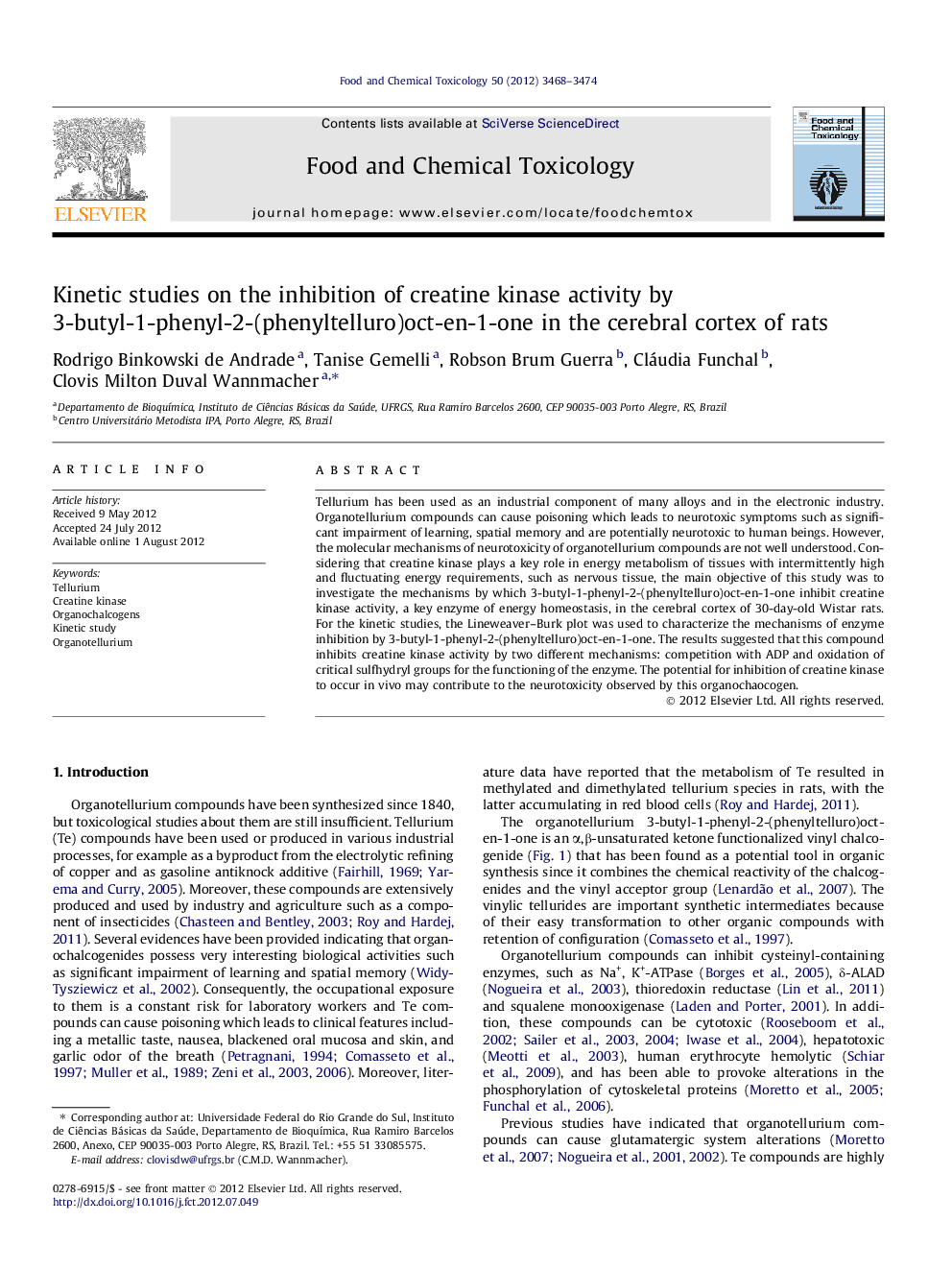| Article ID | Journal | Published Year | Pages | File Type |
|---|---|---|---|---|
| 5852679 | Food and Chemical Toxicology | 2012 | 7 Pages |
Tellurium has been used as an industrial component of many alloys and in the electronic industry. Organotellurium compounds can cause poisoning which leads to neurotoxic symptoms such as significant impairment of learning, spatial memory and are potentially neurotoxic to human beings. However, the molecular mechanisms of neurotoxicity of organotellurium compounds are not well understood. Considering that creatine kinase plays a key role in energy metabolism of tissues with intermittently high and fluctuating energy requirements, such as nervous tissue, the main objective of this study was to investigate the mechanisms by which 3-butyl-1-phenyl-2-(phenyltelluro)oct-en-1-one inhibit creatine kinase activity, a key enzyme of energy homeostasis, in the cerebral cortex of 30-day-old Wistar rats. For the kinetic studies, the Lineweaver-Burk plot was used to characterize the mechanisms of enzyme inhibition by 3-butyl-1-phenyl-2-(phenyltelluro)oct-en-1-one. The results suggested that this compound inhibits creatine kinase activity by two different mechanisms: competition with ADP and oxidation of critical sulfhydryl groups for the functioning of the enzyme. The potential for inhibition of creatine kinase to occur in vivo may contribute to the neurotoxicity observed by this organochaocogen.
⺠Two mechanisms for creatine kinase inhibition by organotellurium are proposed. ⺠One mechanism is non-competitive inhibition for the two substrates of the enzyme. ⺠The other mechanism is competition between the organotellurium and ADP as substrate. ⺠The two mechanisms act simultaneously inhibiting the enzyme activity.
